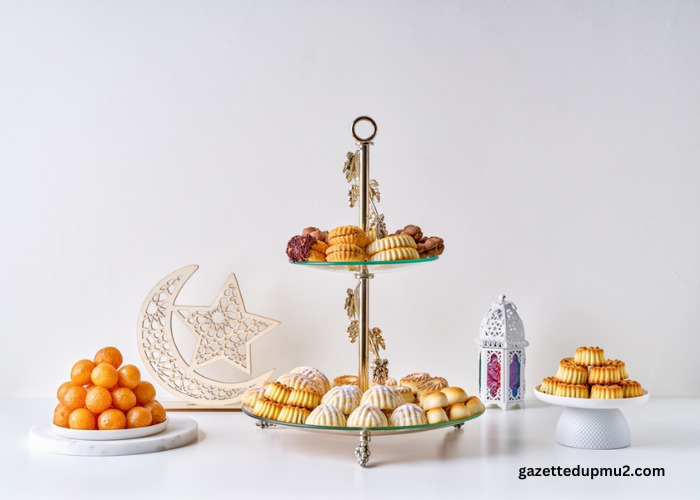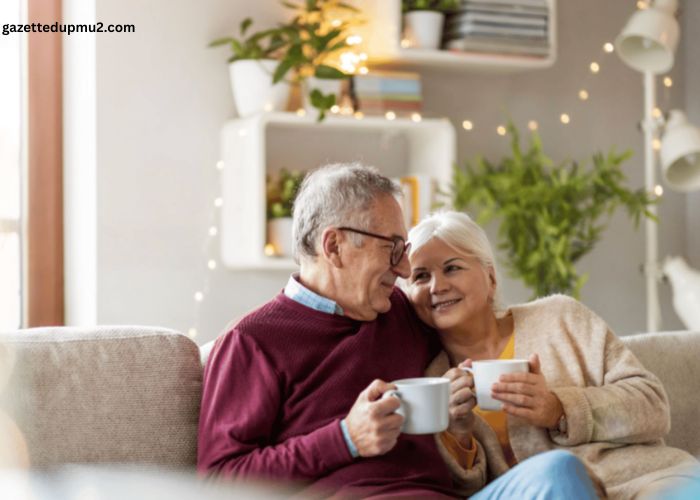As we give farewell to Ramadan and enter the celebration of Eid, let us treasure our relationships and shower everyone with love and blessings. Let’s read about the cultural customs, delectable delicacies enjoyed with the breaking of the Ramadan fast, and the festivities of Eid al-Fitr by Muslims.
Eid al-Fitr: What is it?
The joyful celebration of Eid al-Fitr, sometimes referred to as the “festival of breaking the fast,” signifies the conclusion of Ramadan, the month-long period during which Muslims refrain from eating or drinking anything from sunrise until sunset.
One of the five pillars of Islam is Ramadan, and Eid al-Fitr is an important celebration marking the conclusion of a rigorous month-long period of fasting, prayer, introspection, and almsgiving. It’s a time when friends and family gather together to celebrate over food and drink, exchange Eid gifts, and get dressed up. Discover what customs are followed and what delectable recipes you can prepare to partake in the festivities by reading on.
What Are Eid’s Main Themes?
Considering that Muslims hail from a diverse range of nations, Eid al-Fitr customs might differ slightly, particularly concerning cuisine, yet everyone shares certain traditions.
The main goals of Eid are to commemorate the conclusion of a fasting month and to spend time with loved ones, friends, and community members. Muslims say a special congregational prayer on the morning of Eid to express their gratitude to God, as this is fundamental to their faith.
Every family’s head is required to pay a charity tax, called Fitra or Zakat Al Fitr, during the final few days of Ramadan to support those who are less wealthy in celebrating the holiday. Muslims should consider families in the larger community that could be experiencing hardships, even during festive occasions, to ensure that nobody is left out.
Muslims prepare their homes for the holiday by decorating them and dressing in their finest, sometimes brand-new, attire on the morning of Eid. On the day of Eid, Muslims give each other hugs and exclaim “Eid Mubarak,” which translates to “blessed Eid.” This is intended to foster a spirit of harmony and goodwill. Throughout the day, they visit relatives and eat at each destination.
When Is Eid al-Fitr Celebrated Every Year?
The initial three days of Shawwal, the tenth month in the Islamic calendar, are dedicated to celebrating Eid al-Fitr, which begins with the sighting of the new moon. While Muslims in the UK could take an entire day from work or school to celebrate, Muslims in other Muslim countries typically celebrate Eid for three days straight. Because Muslims use the lunar calendar, Eid al-Fitr falls on a different day every year, occurring eleven days earlier on the Gregorian calendar.
How Is The Holiday Of Eid Observed?
Before Eid, Muslims go shopping for new garments and Eid gifts. Muslims traditionally adorn their homes and put on their finest clothes for the occasion.
Muslims have decadent breakfasts before leading communal Eid prayers. To accommodate the vast number of attendees, prayers are offered at the mosque or outside. Then, throughout the day, families and friends slowly assemble to partake in a sumptuous celebration, at which time close ones frequently exchange cash and Eid gifts.
What Is Eaten During The Celebrations Of Eid al-Fitr?
Since Eid marks the culmination of a month-long fast (which Muslims are not allowed to observe), it is a celebration of feasting. The food that is served is usually rich and luxurious, even though there is no predetermined menu for what is needed on the table.
Savoury Dishes
Samosas, nunor bora, kebabs, and vegetable pakoras are typically made as savoury snacks. As an appetiser, Bengali roast chicken or chicken tikka can be offered. No traditional Eid feast can be called complete without a rice dish. It must be a pilau or biryani. Cooked foods like jeera rice and akhni pulab are served with chicken korma or lamb curry. A simple tomato salad rounds off the dish.
Sweet Dishes
Sweets like gujiya, halwa, and sheer kurma are prepared. Serve handmade desserts like rasmalai and kheer, or gulab jamun, as a finale. Favourite dishes include nankhatai and zarda; for dessert, choose between chocolate cheesecake or fresh cream cake.
Get ready for the ultimate Black Friday Sale! Enjoy massive savings on top brands and products. Shop now and take advantage of our best deals of the year!
After a week of prayers, fasting, and introspection, Eid al-Fitr provides a joyful conclusion. Communities and families get together to celebrate, exchange Eid gifts, and savour delectable feasts. A time of pleasure, togetherness, and thankfulness, Eid al-Fitr is marked by sincere prayers and delectable feasts. Let this Eid be full of pleasure and peace, and may you rejoice with happiness and kindness. Happy Eid!





